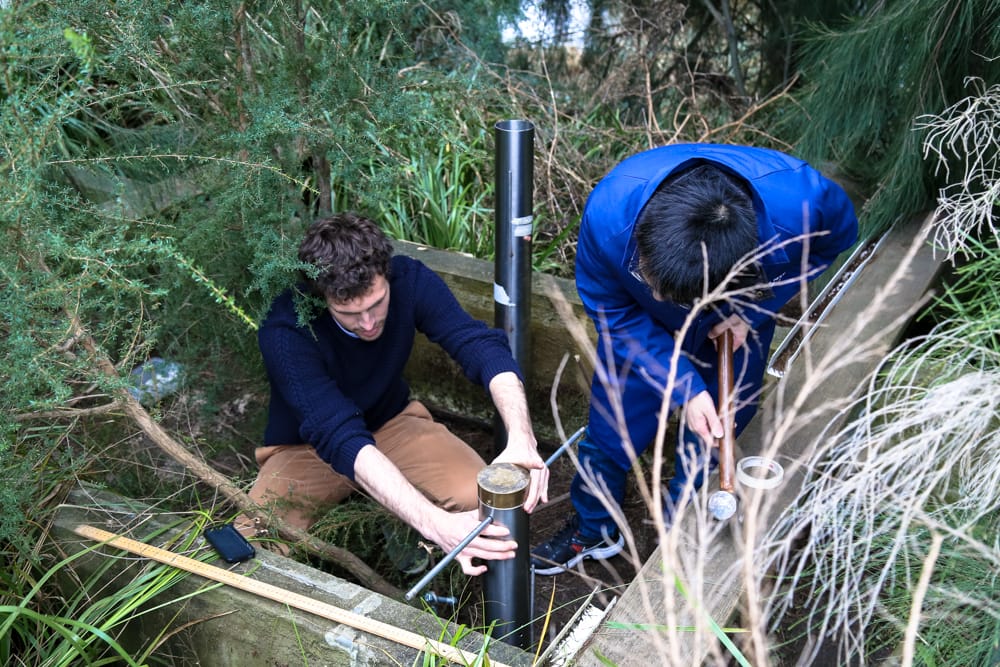Fit-for-purpose water production
In drought-stricken communities around the world, the notion of using drinkable water to wash clothes and flush toilets would be anathema. Yet in Australia – the driest habitable continent on Earth – it is standard practice. For our growing population and in a changing climate, water has myriad daily uses and is in increasing demand. Clothes and car washing, toilet flushing, lawn irrigation, cooking, and drinking are just some of the uses that rely on ready access to fresh water. Not all of these call for water of drinking quality; yet potable water is the only kind currently supplied to most of our urban communities.
The CRC for Water Sensitive Cities (CRCWSC) is developing treatment technologies to enable use of a greater variety of water sources, available for exploitation in the catchments of towns and cities. They include wastewater, greywater, and stormwater. One area of research focuses on the assessment and treatment of stormwater for non-potable uses such as the irrigation of parks and gardens. Depending on where rain falls, urban stormwater may be exposed to a variety of pollutants: pathogens as well as substances such as oil, fuel, rubber, fertilisers, and pesticides. The presence of pollutants in stormwater has so far restricted its use to purposes that involve minimal exposure to people, such as drip-irrigation.
Meeting broader water needs
Far from being restricted to a simple process-engineering perspective to stormwater treatment, the options being developed by the CRCWSC are multi-functional and sustainable, improving water quality while creating thriving plant features in urban environments. Professor Ana Deletic, from Monash University’s Water for Liveability Centre, leads a CRCWSC project on fit-for-purpose water production (Project C1.3) that focuses on development of novel biofilters (also known as rain-gardens or bioretention systems) for stormwater harvesting. Stormwater biofilters are vegetated sand filters. When carefully adapted to urban landscapes, they can also offer micro-climate and amenity benefits to cities. The Monash team, under the leadership of Dr David McCarthy (head of the Environmental and Public Health Microbiology Lab), found that some plants such as ti-trees have antimicrobial properties and therefore are beneficial for the removal of pathogens from stormwater. To further improve stormwater quality, Monash researchers have been modifying zeolites (granular media that are abundant in nature) using copper-based antimicrobial compounds and finding ways to incorporate these new antimicrobial media into biofiltration systems. The modified zeolites are mixed with various sands, vegetated with selected plants, and then tested in the laboratory. PhD candidate Yali Li’s work showed that these innovative types of biofilter designs are effective in treating stormwater for non-potable uses. Two new biofilters are currently being built and tested independently by Monash City Council to treat both stormwater and greywater. The testing and validation of this new technology is an important part of the process, as Ana Deletic emphasises: “The development of new technology in a laboratory is only one step in the process. We are now validating our tools for stormwater harvesting, so that potential users can be assured that it works before they invest in new stormwater treatment options.”

Two further applications of biofiltration technology are being explored in a CRCWSC project that focuses on the treatment of greywater in buildings. Like the biofilters for stormwater, “living walls” also feature filters containing soil and anti-microbial media; but they are planted out with vines that grow up along the sides of buildings. The research team is also developing designs of “green walls” – where plants grow directly from wall structures – for the treatment of greywater produced in the building. While serving this function, the green and living walls also provide shade and cooling, and beautify the building, using little energy and producing no waste.

How much pollution?
In terms of organisms that may affect human health, stormwater is similar in quality to secondary treated wastewater. Potential stormwater pollutants depend on specific local land uses, and vary across catchments. One challenge with stormwater in urban settings is the identification of pollutants, and setting levels of treatment appropriate to the water’s intended use, to prevent public health threats. Jane-Louise Lampard, a PhD candidate at Griffith University’s Smart Water Research Centre, researches the risks of exposure to stormwater through ingestion, inhalation, or skin contact. This project on understanding stormwater quality hazards (Project C1.2) is unique in its focus on untreated stormwater “in the pipe”, before mixing with water from other sources. Jane-Louise is clear about the value of her research. “Making the most of stormwater can be extremely important to local communities,” she says. “In Orange, NSW, for example, treated stormwater forms an integral part of a diverse range of supply options that ensures the town has drinking water security.”
Characterising the quality and suitability of urban stormwater – from different catchments, and for various uses including drinking – will guide local councils and planners as to appropriate treatment options. It will also help to influence Australian guidelines on stormwater management and reuse. So far, the CRCWSC has developed interim guidelines for stormwater treatment and use within cities; but it also includes research teams with particular expertise in wastewater treatment and recycling, working closely with the stormwater team to investigate the fit-for-purpose use of all significant water sources. CRCWSC’s CEO Tony Wong puts this into perspective:
The ultimate aim is to achieve higher levels of water security for our cities and towns, particularly as other CRC research activities are identifying the importance of greening our cities for urban heat mitigation and increased urban liveability. All of these have added water demands.
Nicola Markus for the Mind your Way team